Welcome, community partners! Metro is committed to providing you with the most up-to-date information to share with the communities you serve. This page features resources and news on Metro’s services and a toolkit of materials that can be easily disseminated. Thank you for the important work you are doing during these unprecedented times.
Below, you will find digital and print content that is meant to be shared in the communities you serve. We need your help to spread the word.
Items marked with a 🖨️ symbol are meant to be printed and posted.
Items marked with a 📲 symbol are meant to be shared on social media.
If there is anything we can do to help make sharing news about our service changes easier, feel free to reach us at community.relations@kingcounty.gov
Jump to:
- What service is Metro running right now?
- Where can I find in-language resources for Metro transit service?
- What is Metro doing to keep passengers safe on transit?
- What to expect when riding Metro
- Information for our ADA customers
- Resources
Note: Information about transportation services changes rapidly. We will continually update the toolkit as soon as new materials become available.
What service is Metro running right now?
Our Sept. 19, 2020, service change brought adjustments to the transit system. We’re dedicated to keeping you moving and have upgraded our health and safety practices across our entire system. Due to budget constraints, Metro will operate reduced service in certain areas. Please visit our Service Change page for more details.
As part of the Sept. 19 service change, we debuted key improvements for south King County. Please visit our Quick Start Guide for new ways to travel within these expanded transit zones in Renton, Kent, and Auburn.
For the latest information about transit service, and what Metro is doing to keep people safe while we keep people moving, please direct people to Ready When You Are. This page includes updated trip information, what Metro is doing to keep you healthy and how to best prepare for your next ride.
Where can I find in-language resources for Metro transit service?
The Ready When You Are page is currently also available in Spanish. You can also access the Spanish page by clicking the Español (Spanish) button at the top of the green banner. Additional languages are available at the top of the page in PDF form.
Fare collection resumed on Oct. 1. Tap your ORCA card for an easier and healthier way to pay for fare in the Puget Sound region.
- Visit the “Where to buy” page to learn how to acquire an ORCA card online or in-person.
- Metro’s Pass Sales Office is also open to assist customers needing in-person assistance with ORCA cards and reloading their E-purses. For those who qualify, ORCA LIFT is available to help reduce the cost of riding Metro. Youth and seniors are also eligible for reduced fares.
- You can also acquire Transit GO Tickets through your mobile device.
This information is available in Amharic, Arabic, Korean, Russian, Ukranian, Vietnamese and Chinese (Traditional). Please download this Fare collection translated content (pdf, 412 kb) to access the translated versions. The translated versions of the Ready When You Are page should be available in the coming weeks.
September Service Change: For full information about Metro service and schedules as of Sept. 19, 2020, visit our September service change site. The September Service Change page is also available in the following languages:
Improvements in South King County: As part of the Sept. 19 service change, we debuted key improvements for south King County. Please visit our Quick Start Guide for new ways to travel within these expanded transit zones in Renton, Kent, and Auburn. Below, you can click and download a PDF of the same information. You can also access it by clicking on the language at the top of the Quick Start Guide.
What is Metro doing to keep passengers safe on transit?
To keep you safe while we keep you moving, we’ve made some big changes aboard King County Metro. Please explore the Healthier Metro page for updated trip information, what Metro is doing to keep you healthy, and how to best prepare for your next ride. The page is also available in Spanish, and will soon be available in more languages.
What does Washington’s “Safe Start” Recovery Plan mean for your ride on King County Metro?
- Masks are required
- Reduced or suspended service on some routes
- Passenger limits
- Some seats/areas are blocked off
- Fare collection resumes on Oct. 1
Key messages (also translated in Spanish below):
Please protect yourself and everyone on Metro from COVID-19.
- Stay home if sick. Signs of COVID-19 include fever, cough, and shortness of breath.
- Cover coughs. Do not touch your face and mouth.
- Wash your hands often. Use sanitizer.
- If you must travel, wear a mask.
- Limit travel to essential trips.
- While on board, keep as much space between you and others as possible.
- While waiting for transit, stand at least six feet apart from others.
Spanish translation:
Por favor protéjase y proteja a los demás del cuando viaje en autobús
- Quédese en casa si está enfermo. Los síntomas del COVID-19 incluyen fiebre, tos y falta de aliento.
- Tápese la boca cuando tosa. Trate de no tocarse la cara ni la boca.
- Lávese las manos con frecuencia. Use gel desinfectante para las manos.
- Si tiene que viajar, considere llevar puesta una máscara de tela.
- Mientras esté a bordo del autobús, manténgase lo más alejado posible de los demás.
- Manténgase alejado de los demás mientras espera.
- Párese a por lo menos 6 pies de distancia de los demás cuando esté esperando por el autobús.
What to expect when riding Metro
Guided by Public Health – Seattle & King County and the Centers for Disease Control and Prevention (CDC), we’re doing everything we can to keep you as safe as possible, including:
Disinfecting every vehicle every day
Requiring masks
Upgraded air filters
Physical distancing
Sending more buses for busy routes
Safety partitions
Guidance for passengers
Staying home when sick, planning ahead, adding extra time, always wearing a mask, and maintaining six feet of distance from others will keep all of us moving forward together. Metro resumed collecting fares on Oct. 1. Please use an ORCA card, rather than bills or coins, for an easier and safer way to pay.
Visit the “Where to buy” page to learn how to acquire an ORCA card online or in-person. Metro’s Pass Sales Office is also open to assist customers needing in-person help getting ORCA cards and reloading their E-purses. For those who qualify, ORCA LIFT is available to help reduce the cost of riding Metro. Youth and seniors are also eligible for reduced fares. You can also acquire Transit GO Tickets through your mobile device.
Here’s how to safely and efficiently use Metro
Wear a mask
Stay home when sick
Maintain physical distance
Avoid closed areas
Sign up for Transit Alerts
Pay with your ORCA card
Information for our ADA customers
King County Metro has added additional health and safety measures for our customers and drivers. Metro would like to provide additional information on how these changes could affect the boarding process on Metro operated buses to help prepare community members with disabilities. Please share this information widely with your communities.
Metro returned to general front door boarding, collecting fares and most Metro bus drivers are behind a safety partition.
What is a safety partition?
Metro’s safety partitions are a thin transparent piece of plexiglass that acts like a door and will swing into position when a driver opens the front door, closing the driver in their seating area when riders are boarding/deboarding. It acts like a sneeze guard or face shield, creating a physical barrier that helps minimize direct exposure to any large droplets spread by coughing or sneezing.
The partition will not interfere with the driver’s ability to hear or see you, however, be aware that the driver will also be wearing a face covering which could muffle speech.
How does it work?
The safety partition swings from a hinge attached just behind the driver’s seating area and extends up from the ceiling and down to just below the bus driver’s seat, a similar size and placement as one café/batwing/saloon door.
Once the bus doors are closed, the safety partition swings open to close off the priority seating area from the front door area – meaning there will be a barrier at the edge of the priority seating area that begins approximately three feet above the floor of the bus toward the ceiling.
Once the bus stops and the driver opens the front door, the safety partition will swing back into position, closing off the driver again and allowing access to the front door if needed.
Please be careful when approaching the front of the bus to deboard, you may want to listen for the bus doors to be opened first before deboarding.
Do I have to wear a mask?
Masks are required on all Metro services unless you are unable to wear one. Metro is also providing face mask dispensers on over 100 buses that serve our busiest routes in a pilot program starting with RapidRide buses on the A and F lines in south King County and our trolley buses on routes 7, 36, 43, 44, and 49 in Seattle.
If available, the mask dispenser is located inside the bus on the right wall immediately past the driver’s seat area about three feet from the floor and above the area bus schedules are found. The dispenser is a plastic box that sticks out about five inches and measures eight inches in width and nine inches in height. Masks dispense from the bottom of the dispenser. You can see a sign and photo of the dispenser here: Sign and Picture of Disposable Mask Dispensers (pdf, 1.32 MB)
What if I need assistance from the driver?
For riders needing driver assistance with securing a mobility device or guidance to a seat, the safety partition will be opened manually by the driver to allow them to leave their seat to assist you. Please let the driver know you will need assistance before you board and where you would like to deboard.
When a driver provides assistance, they may put on additional personal protective equipment such as gloves and/or a face shield while they are within six feet of you.
How should I pay my fare?
Metro encourages use of ORCA cards and/or Transit GO Ticket to minimize interaction between the driver and riders. We will continue to accept cash and paper tickets. The safety partition does not interfere with access to the farebox.
If you request a paper transfer, there is a small tray attached to the top left side of the fare box that the transfer will be placed in for riders to take one if they need it. Paper transfers can also be handed directly to riders with visual disabilities and those that need assistance securing their mobility device or to a seat. If you need assistance getting a transfer, please ask the operator for help.
Fare enforcement will remain suspended through the end of the year at a minimum.
Can I get a reduced fare?
Everyone who may be eligible for a reduced fare will be encouraged to sign up for the ORCA LIFT program. For a limited time, anyone enrolling in ORCA LIFT will get a $10 bonus on their card, with funding made possible by Sound Transit.
Along with ORCA LIFT, we also offer reduced fares for youth, seniors, and people with disabilities. To learn more and for help enrolling, call Metro at 206-553-3000 or visit www.kingcounty.gov/metro/fares.
Additional information for customers with disabilities (including deaf blind and visually impaired riders)
For deaf blind customers, Metro drivers may wear gloves to draw route numbers on a customer’s hand. To help with contactless service, Metro encourages use of cards with route numbers and trip destinations for customers who cannot verbally let the operator know which bus they are waiting on and/or where they would like to deboard. An operator will gently tap your forearm upon arrival to your destination and, if needed, assist you off the bus.
For customers who are visually impaired, drivers are directed to verbally call out stops and route number if the automated system is not working on the bus. Please let the operator know which stop you plan on deboarding at while boarding the bus, if possible.
Additional COVID-19 safety measures
Metro will be driving with bus windows open as an added layer of protection as long as the temperature outside is 55 degrees or higher and it is not raining.
Bus capacity limits are still in effect. That means no more than 18 riders on 60-foot bus and 12 riders on a 40-foot bus. If you are passed up due to capacity limits, operators will inform the transit control center to get an additional bus on the route as soon as possible.
Transit Instruction available
Free transit training is available to individuals with disabilities and senior citizens. Instructors knowledgeable with both the King County Metro Transit and Sound Transit systems, provide the training. Participants travel with an instructor on the bus and/or light rail in King County until they are comfortable and capable of safe independent travel. To request a training, visit the website or call 206-749-4242 (WA Relay: 711).
What transportation options are available for people with disabilities?
Access Paratransit is available to people with disabilities, regardless of certification.
Despite Metro’s service reductions, Access is maintaining its traditional service area, hours, and days of service. Access also may be an option for riders with disabilities for whom fixed route is no longer available even if riders are not currently certified for Access service.
Customers with disabilities who are no longer able to reach their essential destinations using fixed-route service can contact the Access Transportation Call Center at 206-205-5000 for assistance with both emergent and ongoing essential transportation needs.
In accordance with Public Health guidance, we ask our riders to stay home if they can and only travel if necessary. We will allow all late cancellations without penalty and ask that customers reach out to us as soon as possible. For more information on Access, visit our Accessible Services page.
Resources
Metro’s social media channels
- Facebook: www.facebook.com/kcmetro
- Twitter: @kcmetrobus
- Instagram: @kcmetrobus
- Youtube: www.youtube.com/user/KCDOTVideo
Bus Signage
- Masks required sign (English and Spanish) (pdf, 73.6 kb)
- Ride Right sign with masks required (pdf, 119 kb)
- Ride Right sign with masks required – Spanish (pdf, 119 kb)
Video Resources 📲
For the latest videos, please visit Metro’s Youtube Channel: https://www.youtube.com/user/KCDOTVideo
- Metro is “Ready when you are” with new safety features (posted Sept. 4, 2020)
- Acciones para protegernos durante los viajes (Aug. 19, 2020)
- Route changes: How bus service is updated in south King County (posted Sept. 21, 2020)
- ORCA card basics – English
- ORCA card basics – Vietnamese
- ORCA card basics – Spanish
- ORCA card basics – Chinese
- ORCA card basics – Somali
- Reduced schedule video (English)
- Reduced schedule video (Spanish)
- New cleaning protocols
- English only
- Our community thanks Metro’s frontline employees
- People from all across our region shared their incredible gratitude to Metro’s drivers, mechanics, custodial staff, electricians, and other frontline employees! You can thank Metro frontline employees through our social media channels or at www.kingcounty.gov/metro/thanks
Social media posts
Feel free to use these posts, or tailor them to your specific audience.
- Amharic
- ጤናማ Metro እዚህ አለ፡፡ በሚንቀሳቀሱበት ጊዜ እርስዎን ለመጠበቅ በ King County Metro ላይ አንዳንድ ትላልቅ ለውጦችን አድርገናል፡፡ ለተጨማሪ ዝርዝሮች እባክዎ የእኛን Ready When You Are ይጎብኙ።
- Arabic
- Chinese (Traditional)
- Metro 即將變得更健康。了解更多關於 Metro 的「做好充分準備」健康和安全改進的資訊。
- Korean
- Metro가 더욱 건강해졌습니다. Metro의 “건강한 대중교통 이용을 위한 준비” 건강 및 안전 개선에 대한 자세한 정보.
- Russian
- Перевозки Metro теперь еще безопаснее. Узнайте больше об улучшениях, связанных с безопасностью и заботой о вашем здоровье по программе Metro «Готовы к встрече с вами».
- Somali
- Metro caafimaad leh ayaa diyaar ah. Xog badan ka ogoow hormarinnada Metro ee “Diyaar ah markaad Diyaar tahay” ee caafimaadka iyo badqabka.
- Ukrainian
- Користуйтеся послугами компанії Metro без ризику для здоров’я. Дізнайтеся більше про програму компанії Metro з покращення безпеки користування транспортом «Ваші потреби – понад усе».
- Vietnamese
- Metro giờ đây an toàn hơn cho sức khỏe của quý vị. Tìm hiểu thêm những cải thiện về an toàn và sức khỏe “Chúng tôi đã sẵn sàng” của Metro.
Photos, graphics and flyers to print, share and post: 📲
COVID-19 Tips Flyer and Social Media Posts:
- Khmer
- Korean
- Lao
- Marshallese
- Russian
- Somali
- Thai
- Tigrinya
- Tagalog/Filipino
- Ukrainian
- Vietnamese
- Amharic
- Arabic
- Chinese (traditional)
- French
- Hindi
- Hmong
- Japanese
COVID-19 Public Health/Metro poster -11″x14″ (Please print, share and post) 🖨️
Public Health Mask Directive Materials:
- Copy of Local Health Officer Directive
- FAQ
- Summary of Directive
- General Mask/Facial Covering Flyer
- Which Face Covering Should You Wear? (English) (🖨️)
- Which Face Covering Should You Wear? (Korean) (🖨️)
- Which Face Covering Should You Wear? (Russian) (🖨️)
- Which Face Covering Should You Wear? (Somali) (🖨️)
- Which Face Covering Should You Wear? (Spanish) (🖨️)
- Social Media Images (📲 )
Other COVID-19 assistance resources for community partners
Official pages:
- Washington state’s Coronavirus page: coronavirus.wa.gov
- Public Health – Seattle & King County Coronavirus page: kingcounty.gov/covid
- Includes public health recommendations in 23 languages
- Downloadable signs for grocery stores, restaurants, childcare, apartment buildings in 9 languages: kingcounty.gov/depts/health/communicable-diseases/disease-control/novel-coronavirus/posters.aspx
Free childcare resources for essential service workers who live and/or work in King County:
- If you are an essential worker who lives or works in King County and you are interested in accessing the free emergency child care slots, please call the Child Care Aware of Washington Family Center at 1-800-446-1114 and complete an intake with Family Center staff.
- After intake, a resources specialist will work to match you with an eligible child care provider that meets your family needs. We understand how urgent your need for child care is and we are working quickly to help find you the most suitable solution. We hope to have child care available by mid-April.
- Please Note: Verification of employment and/or home address will be required to complete intake. To expedite the intake process, please send the required verification documents to subsidy@childcare.org.
King County’s COVID-19 Resource Guide for Community and Small Businesses:
- Link: www.kingcounty.gov/elected/executive/equity-social-justice/tools-resources.aspx
- Unemployment
- Housing
- Utilities
- Cash Assistance
- Food Assistance
- Resources for Undocumented Immigrants
- Small Business Loans and Disaster Assistance
- King County in-language resources
Rental Assistance through United Way of King County:
Through United Way of King County, one month of rental assistance is being offered to people in King County struggling to pay rent due to the coronavirus. For application information and eligibility requirements, visit the links below.
- English: www.uwkc.org/renthelp/
- Amharic: www.uwkc.org/renthelp-amharic/
- Korean: www.uwkc.org/renthelp-korean/
- Spanish: www.uwkc.org/renthelp-spanish/
- Somali: www.uwkc.org/renthelp-somali/
- Vietnamese: www.uwkc.org/renthelp-vietnamese/
- Chinese: www.uwkc.org/renthelp-chinese/
Supporting small businesses:
- Support person of color, immigrant, refugee and woman owned small businesses by going to www.EssentialSeattle.com (Funded by Seattle Office of Economic Development and managed by HomeSight)
King County Regional Donations Connector
- Donating individuals, agencies and businesses are invited to share what they have to contribute (i.e. funding, surgical supplies, masks, counseling etc.) and link up with frontline organizations.
- Community organizations can request what they need to respond to COVID-19.


 Disinfecting every vehicle every day
Disinfecting every vehicle every day Requiring masks
Requiring masks Upgraded air filters
Upgraded air filters Physical distancing
Physical distancing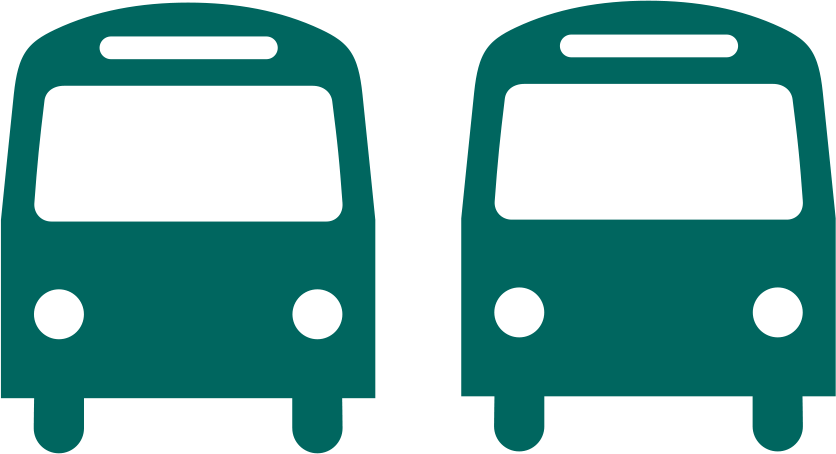 Sending more buses for busy routes
Sending more buses for busy routes Safety partitions
Safety partitions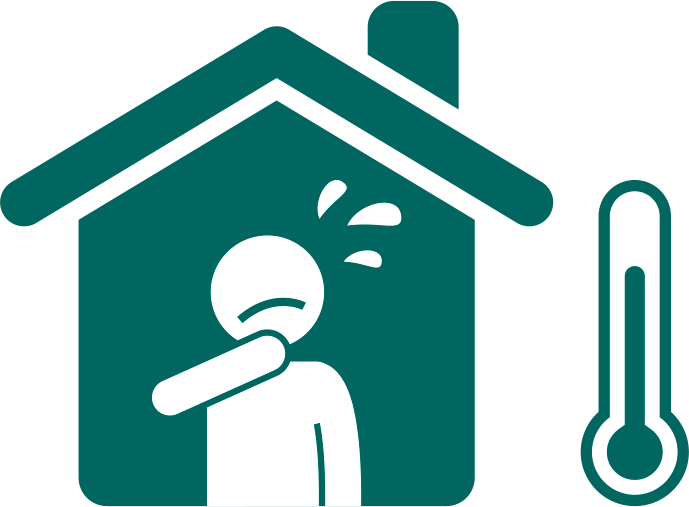 Stay home when sick
Stay home when sick Maintain physical distance
Maintain physical distance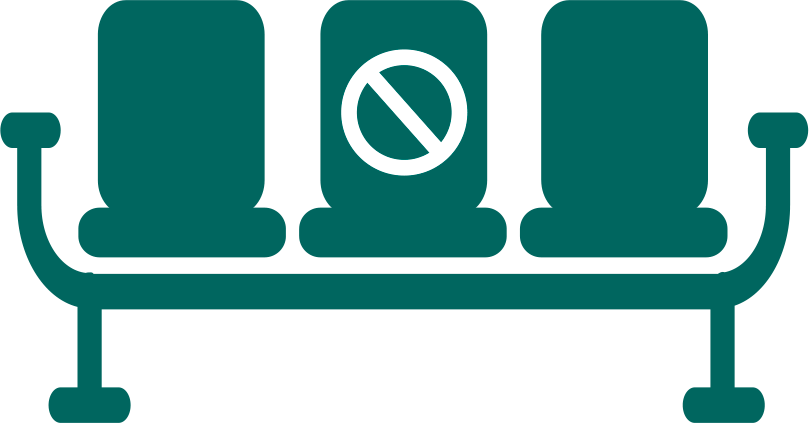 Avoid closed areas
Avoid closed areas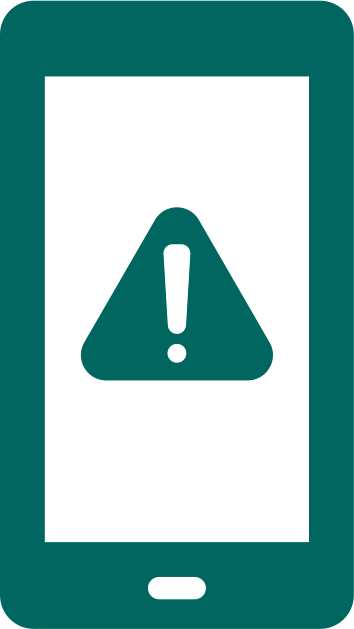 Sign up for Transit Alerts
Sign up for Transit Alerts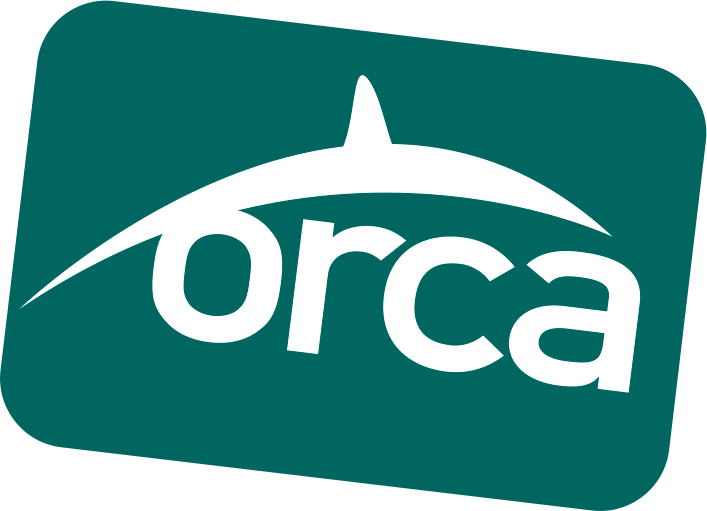 Pay with your ORCA card
Pay with your ORCA card






